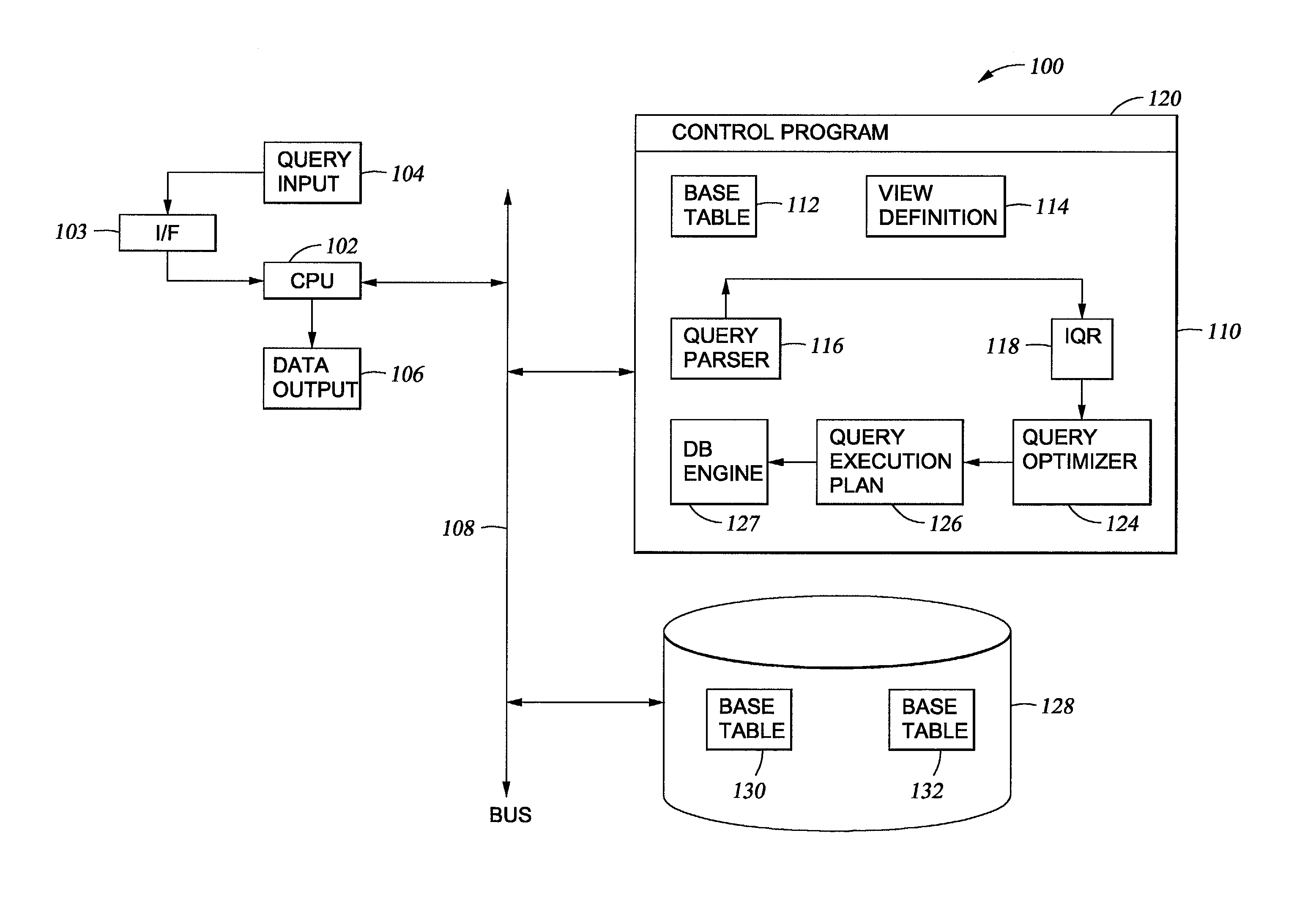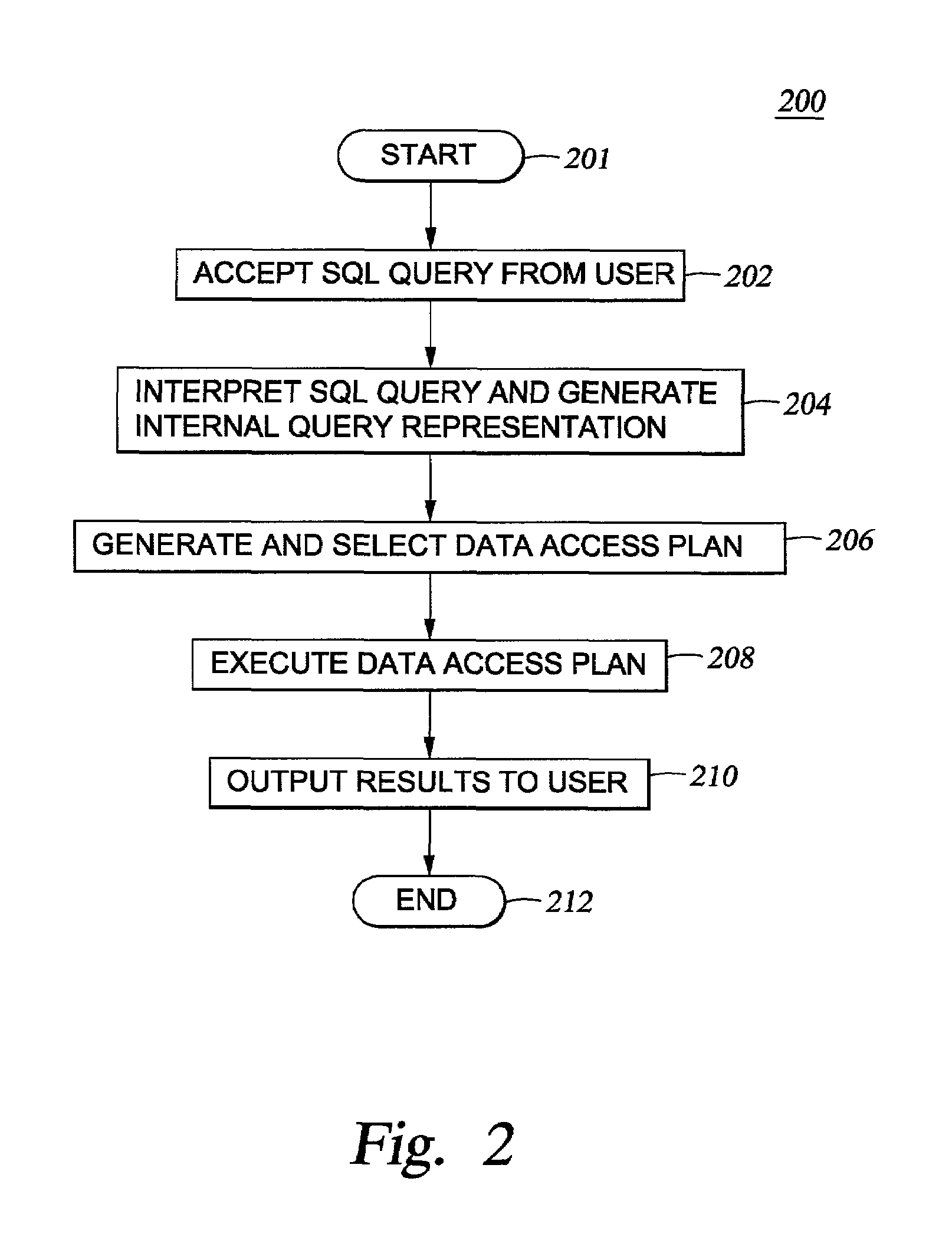Representation for data used in query optimization
a data representation and query optimization technology, applied in the field of databases, can solve the problems of limited time in which to do particular plan, and difficulty in doing the job of optimizing
- Summary
- Abstract
- Description
- Claims
- Application Information
AI Technical Summary
Problems solved by technology
Method used
Image
Examples
Embodiment Construction
The System
[0025]Methods, systems and articles of manufacture are provided for query optimization. While the embodiments hereinafter will be described in the context of fully functioning computers and computer systems, those skilled in the art will appreciate that the various embodiments of the invention are capable of being distributed as a program product in a variety of forms, and that embodiments of the invention apply equally regardless of the particular type of signal bearing media used to actually carry out the distribution. In one embodiment, a signal bearing medium contains a program which, when executed by a processor, performs an optimization method. Examples of signal bearing media include, but are not limited to, recordable type media such as volatile and nonvolatile memory devices, floppy and other removable disks, hard disk drives, optical disks (e.g., CD-ROMs, DVDs, etc.), and transmission type media such as digital and analog communication links. Transmission type me...
PUM
 Login to View More
Login to View More Abstract
Description
Claims
Application Information
 Login to View More
Login to View More - R&D
- Intellectual Property
- Life Sciences
- Materials
- Tech Scout
- Unparalleled Data Quality
- Higher Quality Content
- 60% Fewer Hallucinations
Browse by: Latest US Patents, China's latest patents, Technical Efficacy Thesaurus, Application Domain, Technology Topic, Popular Technical Reports.
© 2025 PatSnap. All rights reserved.Legal|Privacy policy|Modern Slavery Act Transparency Statement|Sitemap|About US| Contact US: help@patsnap.com



